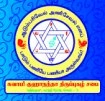

திரு அருணகிரிநாதர் அருளிய
திருப்புகழ்
Sri AruNagirinAthar's
Thiruppugazh

 |  திரு அருணகிரிநாதர் அருளிய Sri AruNagirinAthar's |  |
|---|
| (இந்த வலைத்தளத்தைப் பயன்படுத்துவதற்கு முன்பு எனது முக்கியக் குறிப்பைப் படியுங்கள் - நன்றி). (Please read my important note before using this website - Thank You). |
| திருப்புகழ் 1111 நீரு நிலம் அண்டாத (பொதுப்பாடல்கள்) Thiruppugazh 1111 neerunilamaNdAdha (common) |
 |  | தமிழிலும் ஆங்கிலத்திலும் பொருள் எழுதியது ஸ்ரீ கோபால சுந்தரம் Meanings in Tamil and English by Sri Gopala Sundaram | English in PDF PDF அமைப்பு mp3 | ஆலய வரிசை அகரவரிசை எண்வரிசை தேடல் venue list alphabetical numerical search |
|
தானதன தந்தான தானதன தந்தான தானதன தந்தான ...... தனதான ......... பாடல் ......... நீருநில மண்டாத தாமரைப டர்ந்தோடி நீளமக லஞ்சோதி ...... வடிவான நேசமல ரும்பூவை மாதின்மண மும்போல நேர்மருவி யுண்காத ...... லுடன்மேவிச் சூரியனு டன்சோம னீழலிவை யண்டாத சோதிமரு வும்பூமி ...... யவையூடே தோகைமயி லின்பாக னாமெனம கிழ்ந்தாட சோதிஅயி லுந்தாரு ...... மருள்வாயே வாரியகி லங்கூச ஆயிரப ணஞ்சேடன் வாய்விடவொ டெண்பாலு ...... முடுபோல வார்மணியு திர்ந்தோட வேகவினி றைந்தாட மாமயில்வி டுஞ்சேவல் ...... கொடியோனே ஆரியன வன்தாதை தேடியின மும்பாடு மாடலரு ணஞ்சோதி ...... யருள்பாலா ஆனைமுக வன்தேடி யோடியெய ணங்காத லாசைமரு வுஞ்சோதி ...... பெருமாளே. ......... சொல் விளக்கம் ......... நீரு(ம்) நிலம் அண்டாத தாமரை படர்ந்து ஓடி ... நீரும் பூமியும் சம்பந்தப்படாது தழைத்து விளங்கும் (நாலிதழ்த் தாமரை ஆகிய மூலாதாரம்,* ஆறிதழ்த் தாமரையாகிய சுவாதிஷ்டானம், பத்து இதழ்த் தாமரையாகிய மணி பூரகம், பன்னிரண்டு இதழ்த் தாமரையாகிய அனாகதம், பதினாறு இதழ்த் தாமரையாகிய விசுத்தி, இரண்டு அல்லது மூன்று இதழ்த் தாமரையாகிய ஆக்ஞை ஆகிய) ஆதாரங்களின் வழியாக (சிவ யோக நெறியில்) படர்ந்து சென்று, நீளம் அகலம் சோதி வடிவான ... நீளம் அகலம் இவை எல்லை அற்று விளங்கும் ஜோதி சொரூபமான, நேச மலரும் பூவை மாதின் மணமும் போல நேர் மருவி ... சிவ நேசத்தால் பெறப்படும் சிவமாதினை திருமணம் செய்து கொண்டது போல அந்தச் சிவச்சுடருடன் நேராகப் பொருந்தி, உண் காதலுடன் மேவி ... உள்ளத்தில் நீங்காத அன்புடன் இருந்து, சூரியனுடன் சோமன் நீழல் இவை அண்டாத சோதி மருவும் பூமி அவை ஊடே ... சூரியன், சந்திரன் ஆகியவர்களின் ஒளி எட்ட முடியாத பேரொளி பொருந்தும் அந்த ஜோதி மண்டல பூமியில், தோகை மயிலின் பாகனாம் என மகிழ்ந்து ஆட ... தோகை உடைய மயிலைச் செலுத்தியவனாகிய முருகன் இவனே என்று நான் மகிழ்ந்து கூத்தாட, சோதி அயிலும் தாரும் அருள்வாயே ... உனது ஒளி வீசும் வேலையும் கடப்ப மாலையையும் தந்தருளுக. வாரி அகிலம் கூச ஆயிரம் பணம் சேடன் வாய் விட ஒடு ... கடலின் எல்லாப் பகுதிகளும் கூசி நிலை குலையவும், ஆயிரம் படங்களை உடைய ஆதிசேஷன் வாய் பிளந்து வெளிப்பட்டு ஓடவும், எண் பாலும் உடு போல வார் மணி உதிர்ந்து ஓடவே ... (அது அங்ஙனம் ஓடும்) எட்டுத் திசைகளிலும் நட்சத்திரங்கள் உதிர்வன போல (அப்பாம்பின்) உயர்ந்த ரத்தின மணிகள் உதிர்ந்து சிதறவும், கவின் நிறைந்து ஆட மா மயில் விடும் சேவல் கொடியோனே ... அழகு ததும்பி ஆடுகின்ற சிறந்த மயிலைச் செலுத்தும் சேவல் கொடியை உடையவனே, ஆரியன் அவன் தாதை தேடி இனமும் பாடும் ... பிரமனும், அவனுடைய தந்தையாகிய திருமாலும் தேடி நின்று (இன்னமும் காணாது), பாடிப் போற்றும் ஆடல் அருணம் சோதி அருள் பாலா ... திரு நடனம் புரிந்த செஞ்சோதியாகிய அண்ணாமலையார் அருளிய பாலனே, ஆனை முகவன் தேடி ஓடியே அ(ண்)ண ... யானைமுகனான கணபதி வள்ளி இருக்கும் இடத்தைத் தேடி ஓடியே வந்து நெருங்கும் அளவுக்கு அம் காதல் ஆசை மருவும் சோதி பெருமாளே. ... அழகிய காதலாசையை வள்ளியின் மேல் கொண்ட ஜோதி வடிவமான பெருமாளே. |
* இங்கு சிவயோக முறைகள் விளக்கப்பட்டுள்ளன. அதன் சுருக்கம் வருமாறு: நாம் உள்ளுக்கு இழுக்கும் காற்றுக்குப் 'பூரகம்' என்றும், வெளிவிடும் காற்றுக்கு 'ரேசகம்' என்றும் பெயர். உள்ளே நிறுத்திவைக்கப்படும் காற்றுக்கு 'கும்பகம்' என்று பெயர். உட் கொள்ளும் பிராணவாயு உடலில் குறிப்பிட்ட 'ஆதாரங்கள்' (நிலைகள், சக்கரங்கள்) மூலமாகப் படிப்படியாகப் பரவி, மேல் நோக்கிச் சென்று, தலையில் 'பிரம கபால'த்தில் உள்ள 'ஸஹஸ்ராரம்' (பிந்து சக்கரம்) என்ற சக்கரத்துக்குச் செல்லும். இந்த ஐக்கியம் ஏற்படும்போது, அமுத சக்தி பிறந்து, ஆறு ஆதாரங்களுக்கும் ஊட்டப்பட்டு, மீண்டும் அதே வழியில் 'மூலாதார'த்தை வந்து அடையும். இந்த ஆதாரங்களை ஒழுங்கு படுத்தும் வகையில் மூன்று 'மண்டல'ங்களும் (அக்கினி, ஆதித்த, சந்திர மண்டலங்கள்), பத்து 'நாடி'களும் (இடைகலை, பிங்கலை, சுழுமுனை முதலியன) உள்ளன. 'இடைகலை' பத்து நாடிகளுள் ஒன்று. இடது நாசியால் விடும் சுவாசம். 'பிங்கலை' பத்து நாடிகளுள் ஒன்று. வலது நாசி வழியால் விடும் சுவாசம். 'சுழு முனை' இடைகலைக்கும் பிங்கலைக்கும் இடையில் உள்ளது. 'சுழு முனை' ஆதாரம் ஆறிலும் ஊடுருவி நிற்பது. 'இடைகலை'யும், 'பிங்கலை'யும் ஒன்றுக்கொன்று பின்னி நிற்பன. சுவாச நடப்பை 'ப்ராணாயாமம்' என்ற யோக வன்மையால் கட்டுப்படுத்தினால் மன அமைதி ஏற்படும். |
ஆதாரங்களின் பெயர்களும், உடலில் இருக்கும் இடம், உரிய ஐம்பூதங்கள், அனுட்டிக்கும்போது மலர் வடிவங்களின் அமைப்பு, அக்ஷரக் குறிப்பு ஆகியவை கீழே தரப்பட்டுள்ளன. மேலும் இந்த ஆதாரங்களுக்கு உரிய தலங்கள், கடவுளர்கள் பெயர்களும் கொடுக்கப்பட்டுள்ளன. | ||||||
| ஆதாரம் மூலாதாரம் சுவாதிஷ்டானம் மணிபூரகம் அநாகதம் விசுத்தி ஆக்ஞா பிந்து சக்கரம் (துவாதசாந்தம், ஸஹஸ்ராரம், பிரமரந்திரம்) | இடம் குதம் கொப்பூழ் மேல்வயிறு இருதயம் கண்டம் புருவத்தின் நடு கபாலத்தின் மேலே | பூதம் மண் அக்கினி நீர் காற்று ஆகாயம் மனம் | வடிவம் 4 இதழ் கமலம் முக்கோணம் 6 இதழ் கமலம் லிங்கபீடம் நாற் சதுரம் 10 இதழ் கமலம் பெட்டிப்பாம்பு நடு வட்டம் 12 இதழ் கமலம் முக்கோணம் கமல வட்டம் 16 இதழ் கமலம் ஆறு கோணம் நடு வட்டம் 3 இதழ் கமலம் 1008 இதழ் கமலம் | அக்ஷரம் ஓம் ந(கரம்) ம(கரம்) சி(கரம்) வ(கரம்) ய(கரம்) | தலம் திருவாரூர் திருவானைக்கா திரு(வ) அண்ணாமலை சிதம்பரம் திருக்காளத்தி காசி (வாரணாசி) திருக்கயிலை | கடவுள் விநாயகர் பிரமன் திருமால் ருத்திரன் மகேசுரன் சதாசிவன் சிவ . சக்தி ஐக்கியம் |
* 96 தத்துவங்கள் பின்வருமாறு: 36 பரதத்துவங்கள் (அகநிலை): ஆத்ம தத்துவம் 24, வித்யா தத்துவம் 7, சிவ தத்துவம் 5. ஐம்பூதங்கள், அவற்றின் தன்மைகளோடு, ஐயைந்து - 25 (புறநிலை): மண், தீ, நீர், காற்று, வெளி. ஏனைய தத்துவங்கள் 35 (புறநிலை): வாயுக்கள் 10, நாடிகள் 10, கன்மங்கள் 5, அகங்காரம் 3, குணம் 3, வாக்குகள் 4. |
| 'wikisource' reference links for this song இப்பாடலுக்கான 'விக்கிமூலம்' இணையப் பக்கங்கள் pg 3.256 pg 3.257 pg 3.258 pg 3.259 WIKI_urai Song number: 1114 goto wiki alpha list (Please note: Kaumaram.com is NOT responsible for accuracy and contents of external links) |
 | ஸ்ரீ மஹா பெரியவா திருப்புகழ் சபை & சுவாமி குஹாநந்தா திருப்புகழ் சபை (சேலம்) Sri Maha Periyava Thirupugazh Sabha & Swamy Gughanandha Thirupugazh Sabha (Salem) |  பாடகர் பக்கத்திற்கு பாடகர் பக்கத்திற்கு to singer's page |
 | சுவாமி குஹாநந்தா திருப்புகழ் சபை (சேலம்) இப்பாடலின் பொருள் Swamy Gughanandha Thirupugazh Sabha (Salem) meanings in Tamil |  |
 | திரு சபா. மெய்யப்பன் Thiru S. Meyyappan பாடகர் பக்கத்திற்கு to singer's page |
|
(Please note: Kaumaram.com is NOT responsible for accuracy and contents of external links) |
|
Song 1111 - neeru nilam aNdAdha (common) neerunila maNdAtha thAmaraipa darnthOdi neeLamaka lanjOthi ...... vadivAna nEsamala rumpUvai mAthinmaNa mumpOla nErmaruvi yuNkAtha ...... ludanmEvi sUriyanu dansOma neezhalivai yaNdAtha sOthimaru vumpUmi ...... yavaiyUdE thOkaimayi linpAka nAmenama kizhnthAda sOthiayi lunthAru ...... maruLvAyE vAriyaki langkUsa Ayirapa NanchEdan vAyvidavo deNpAlu ...... mudupOla vArmaNiyu thirnthOda vEkavini RainthAda mAmayilvi dunchEval ...... kodiyOnE Ariyana vanthAthai thEdiyina mumpAdu mAdalaru NanjOthi ...... yaruLbAlA Anaimuka vanthEdi yOdiyeya NangkAtha lAsaimaru vunjOthi ...... perumALE. ......... Meaning ......... neeru(m) nilam aNdAtha thAmarai padarnthu Odi: These lotus flowers have blossomed without any involvement of water or earth; (these are the four-petaled lotus MUlAthAram*, the six-petaled one SwAdhishtAnam, the ten-petaled one maNipUragam, the twelve-petaled one anAgatham, the 16-petaled one visuththi, and the 2 or 3-petaled one Agnai); climbing up through these centres (in the path of Siva-yOgA), neeLam akalam jOthi vadivAna nEsa malarum pUvai mAthin maNamum pOla nEr maruvi: mingling directly with the effulgence of SivA, with an immeasurable length and breadth, which flame is the result of the loving union of SivA and His Consort, Shakthi, uN kAthaludan mEvi: remaining there with unswerving devotion, sUriyanudan sOman neezhal ivai aNdAtha sOthi maruvum pUmi avai UdE: and entering the bright and spectacular zone that could never be reached by the rays of the sun or the moon, thOkai mayilin pAkanAm ena makizhnthu Ada: I wish to dance with joy, exclaiming "He is the Lord MurugA who mounts the feathered peacock"; sOthi ayilum thArum aruLvAyE: for that, kindly grant me Your sparkling spear and the kadappa garland! vAri akilam kUsa Ayiram paNam sEdan vAy vida odu: All parts of the sea shuddered and shrank; the thousand-hooded serpent, AdhisEshan, scrammed away with his mouth ajar; eN pAlum udu pOla vAr maNi uthirnthu OdavE: (while it ran amuk), its precious gems scattered all over in the eight directions like falling stars; kavin niRainthu Ada mA mayil vidum sEval kodiyOnE: as You flew on the gracefully dancing peacock, Oh Lord with the unique rooster on Your staff! Ariyan avan thAthai thEdi inamum pAdum: BrahmA and His father, VishNu, who are even now seeking (in vain to locate His head and feet), sing His glory; Adal aruNam jOthi aruL bAlA: He is the Cosmic dancer; He is the reddish effulgence, Lord of ThiruvaNNAmalai; You are the child of that Lord SivA! Anai mukavan thEdi OdiyE a(N)Na: The elephant-faced GaNapathi came running in search of VaLLi's place because of am kAthal Asai maruvum jOthi perumALE.: Your exquisite love for her; Your form is one of brilliant radiance, Oh Great One! |
* In this song, several Siva-yOgA principles are explained: The inhaled air is known as 'pUragam' and the exhaled air is 'rechagam'. The retained air is 'kumbagam'. The oxygen that enters the body climbs up step by step through several centres, known as 'chakrAs' and ultimately reaches 'sahasrAram' or 'bindhuchakram' on the top of the skull. At that point of union, nectar flows from that chakrA and seeps through and soaks the six centres of the body and returns to the basic chakrA, 'mUlAthAram'. Three zones (namely, the sun zone, the moon zone and the fire zone) and ten nerves ('nAdis') govern the six centres; the principal nerves are 'susumna', 'idaikala' and 'pingala'. idakala: one of the ten 'nAdis' (nerves), when inhalation takes place through the left nostril; pingala: one of the ten 'nAdis' (nerves), when inhalation takes place through the right nostril; susumna: one of the ten 'nAdis' (nerves), situated between the above two 'nadis', and running through the spinal chord covering all the six centres of 'kundalini'. ('idakala' and 'pingala' are entwined around 'susumna'). If breathing is controlled through a yOgA called 'praNAyAmA', the mind becomes tranquil. |
The names of the chakrA centres, the deities, the elements, the zones of the body where they are located, the shape of the chakrAs, the description of the flowers in the chakrAs, the letters of the ManthrA governing them and the temple-towns representing them are given in the following chart: | ||||||
| ChakrA mUlAthAram swAthishtAnam maNipUragam anAgatham visudhdhi AgnyA Bindu chakkaram (DhwAdhasAntham, SahasrAram, Brahma-ranthiram) | Body Zone Genitals Belly-button Upper belly Heart Throat Between the eyebrows Over the skull | Element Earth Fire Water Air Sky Mind | Shape 4-petal lotus Triangle 6-petal lotus Lingam Square 10-petal lotus cobra in box central circle 12-petal lotus Triangle lotus circle 16-petal lotus Hexagon central circle 3-petal lotus 1008-petal lotus | Letter Om na ma si va ya | Temple ThiruvArUr ThiruvAnaikkA Thiru aNNAmalai Chidhambaram ThirukkALaththi VaranAsi (kAsi) Mt. KailAsh | Deity VinAyagar BrahmA Vishnu RUdhran MahEswaran SathAsivan Siva-Sakthi Union |
| தமிழில் PDF அமைப்பு ஆலய வரிசை அகரவரிசை எண்வரிசை in PDF venue list alphabetical numerical |
| ... www.kaumaram.com ... The website for Lord Murugan and His Devotees முகப்பு அட்டவணை மேலே home contents top |
Kaumaram.com is a non-commercial website. This website is a dedication of Love for Lord Murugan. PLEASE do not ask me for songs about other deities or for BOOKS - This is NOT a bookshop - sorry. Please take note that Kaumaram.com DOES NOT solicit any funding, DIRECTLY or INDIRECTLY. © Copyright Kaumaram dot com - 2001-2040 COMMERCIAL USE OF MATERIAL IN THIS WEBSITE IS NOT PERMITTED. Please contact me (the webmaster), if you wish to place a link in your website. email: kaumaram@gmail.com Disclaimer: Although necessary efforts have been taken by me (the webmaster), to keep the items in www.kaumaram.com safe from viruses etc., I am NOT responsible for any damage caused by use of and/or downloading of any item from this website or from linked external sites. Please use updated ANTI-VIRUS program to rescan all downloaded items from the internet for maximum safety and security. மேலே top |